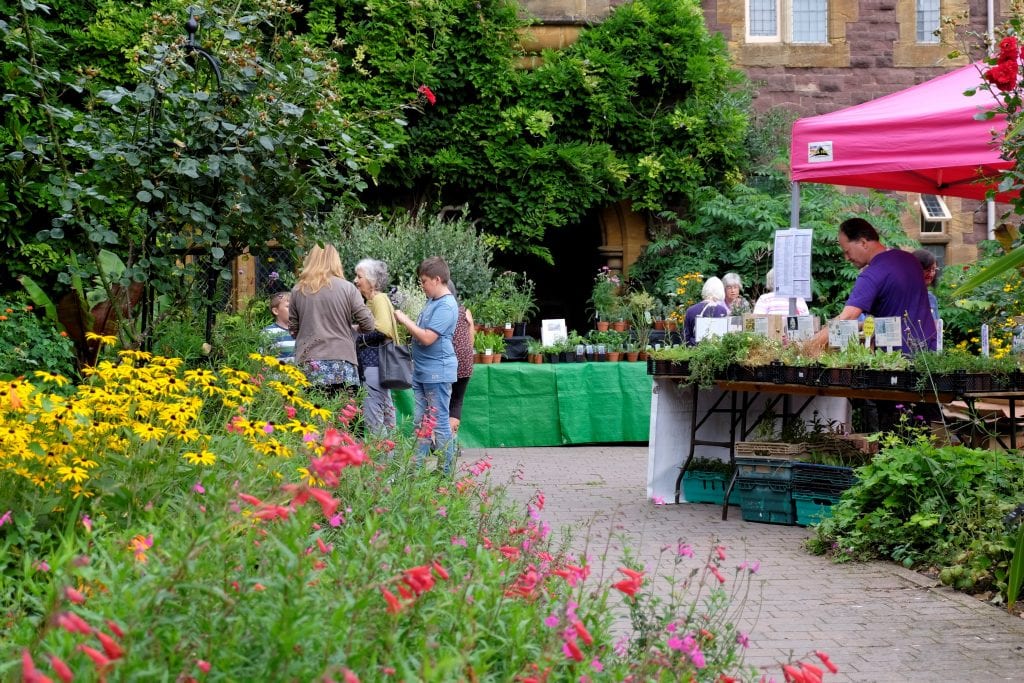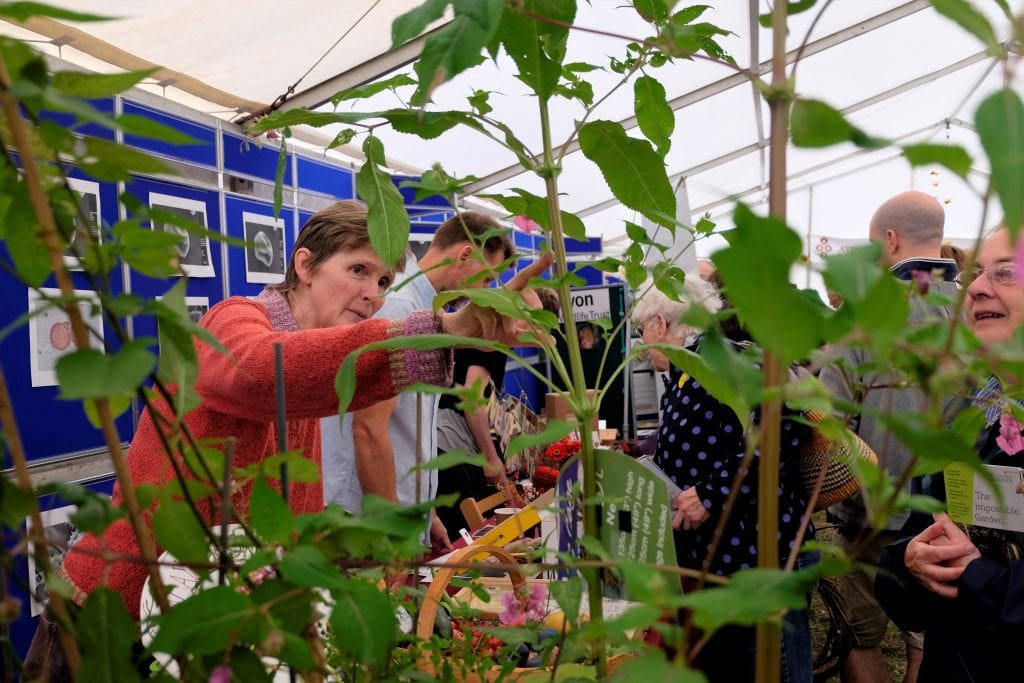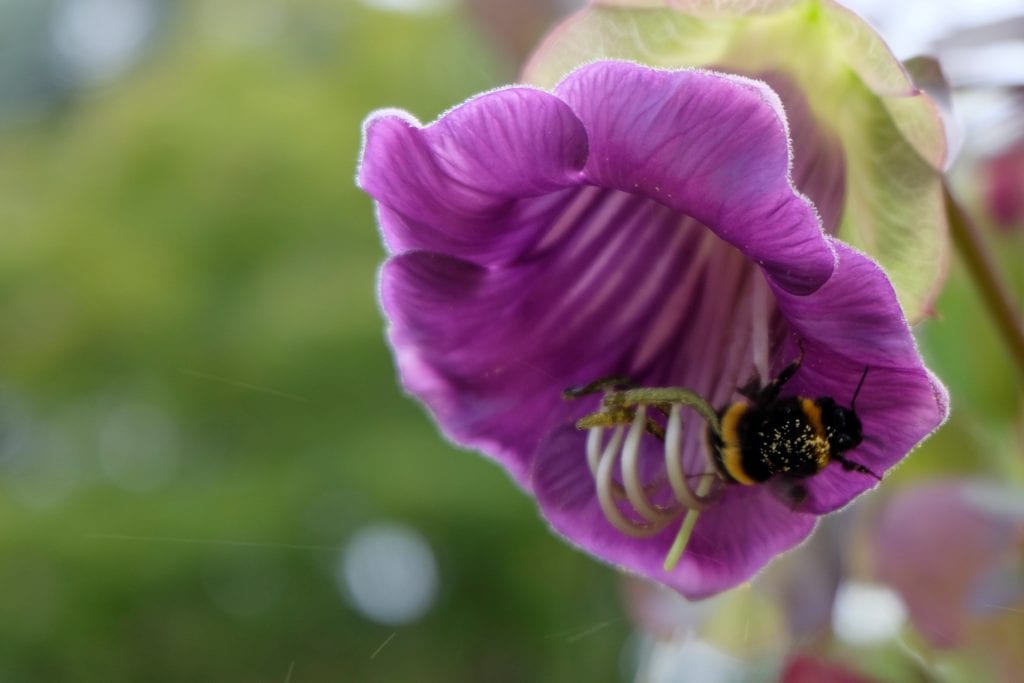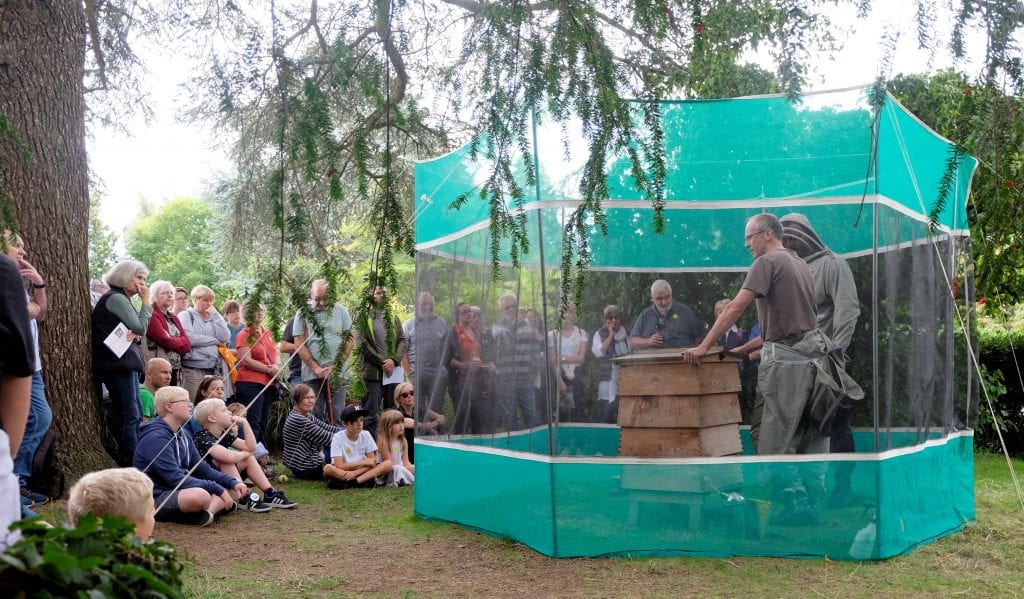On the first weekend of September, members of the Bristol community came together to celebrate pollinators in the University of Bristol’s Botanic Garden. The Bee and Pollination Festival returned in its ninth year and welcomed over 2,200 visitors across the two days. The Botanic Garden was abuzz, with a full schedule of educational talks, craft activities, live demonstrations, with plants and produce to browse and take home.


Nick Wray, Curator of the Botanic Garden, summarised: “The festival allows scientists, beekeepers, food and cider producers and nature reserve managers to come together and share knowledge and experiences with the visitors. A programme of inspirational talks allowed experts to share their knowledge to some of the two thousand people who visited over the weekend, which this year coincided with the 90th Anniversary Year of the Bristol Beekeepers Annual Honey Show, making for an enriching experience for all.”
The School of Biological Sciences was represented by a team of researchers and current students, set on enthusing the public about pollination. The team’s educational messages focussed on highlighting the diversity of pollinators, beyond the much-celebrated honey bee, Apis mellifera. University of Bristol representatives spoke passionately about pollinators which are often overlooked, including hoverflies and solitary bees, of which there are over 250 species in the UK.

Solitary bee houses from Professor Jane Memmott’s garden were on display to encourage the public to buy or build their own, aiding invertebrate conservation efforts.
Learn more http://www.avonwildlifetrust.org.uk/getbristolbuzzing



Other delights included invertebrate collections from previous research projects, which garnered surprised reactions at the number and range of different bee species. Also, on show was an old nest of buff-tailed bumblebees, Bombus terrestris, which was interesting as they are usually hidden underground. Plants of Himalayan balsam, Impatiens glandulifera, were on display to engage visitors in discussions about non-native plants. Himalayan balsam is a real problem in nature reserves, out-competing native species. However, it amazingly has 10X more nectar and pollen than any native plant and is the fastest growing plant in the UK.

The stand offered games to play, including: “Guess how much sugar is in the flower.” Frieda, aged 10, spent half an hour playing and learning, asking questions to the University’s Biological Sciences team. Freida’s favourite part of the day was “discovering loads of stuff.” She added, “It’s great how much you can learn in one day. It’s cool how some flowers have loads of petals but are rubbish for bees.”
Frieda is referring to artificial selection occurring over a long period of time, for flowers with big, showy petals in multiple layers. Whilst aesthetically pleasing to some humans, there are consequences for pollinators; both the nectar and pollen content can be drastically reduced.

Stallholder, Malcolm Allison, specifically brought plants to sell at the festival which are considered better for pollinators. These flowers are assumed to contain higher quantities of pollen and nectar, which is important for the conservation of local invertebrates. Researchers at the University of Bristol are currently investigating exactly what makes certain plants good for pollinators in collaboration with the Royal Horticultural Society.
The Avon Wildlife Trust at Feed Bristol were also selling wildflower plug plants. Rachael explained, “We do lots of wild collecting from local sites. Sourcing plants as locally as possible, means they are more resilient to pests.”


The festival welcomed representatives from the Bumblebee Conservation Trust. Somerset Volunteer Coordinator, John Butler, noted the current variety of bumblebee species in the garden, and observed: “There’s even a hornet flying around.”
Educational talks at the festival included a hornet identification workshop, where Colin Lodge discussed the threats posed by Asian Hornets, Vespa velutina nigrithorax. Meanwhile, Clara Montgomery, a PhD candidate from the School of Biological Sciences, presented her research on bumblebees and floral electric fields.
Bristol beekeeper, Quentin Alsop, captivated audiences with live hive demonstrations and carefully opened one of the Botanic Garden’s resident honey bee colonies to show the public the inner workings of the hive. Quentin discussed the stigma associated with stinging insects, and put people at ease whilst handling the bees, despite not wearing a bee suit.

Festival-goers got involved with activities including beeswax candle making and willow weaving workshops. One participant was overheard commenting on their willow creation “Well, it was meant to be a bee, but it’s now a dragonfly.” A success nonetheless.
The atmosphere was certainly festive, with the returning sunshine, and drinks provided by Mad Apple Cider Company. Sue Beech, Membership Secretary at the Botanic Garden, remarked, “It’s always a lovely and calm atmosphere at these events, even though it’s really busy.”

At the end of the festival, one person pulled over his car, wound down the window and declared, “That place, that just blew my mind.” Hopefully, next year’s will be just as good.

The Botanic Garden is free to ALL students, under 18s, Friends of the Garden, and University of Bristol staff. Admission is otherwise £5.50 (includes a 50p gift aid donation). The Impossible Garden by Luke Jerram is open 7-days-a-week until November 25th, 2018. The exhibition is a collaboration between artist Luke, who is colour-blind, and researchers at the Bristol Vision Institute. The exhibition features 12 sculptural ideas exploring how we perceive the world around us.

Written by Freya Cohen (Biology MSci) and Rosie Leary








